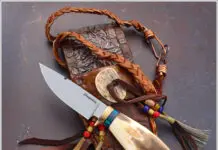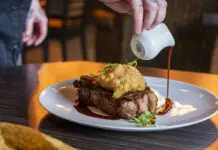‘Tis the season for all things sweet, gooey and decadent. While there are desserts galore this time of year, pies are surely one of the most popular. But have you ever stopped to think: What would Thanksgiving be without pie? Perish the thought!
Even if you don’t like to bake or can’t because of time, there are two ladies in Oklahoma City who love baking pie so much that they have made it their business.
Darcy Schein and Leslie Coale-Mossman became acquainted when their daughters attended the same Mother’s Day Out program. Soon they discovered that they both like to cook. Since their husbands travel frequently, the two busy moms started preparing dinner for each other once a week.
Word spread, and the duo started cooking for friends’ parties, showers and other get-togethers.
The next step seemed natural. They opened Pie Junkie in May in Oklahoma City’s busy Plaza District.
When asked about their philosophy for the business, they both chimed in.
“We like to bake things we like to eat, so if we like it and think it tastes good, hopefully our customers will as well. If we’re having fun doing it, then it’s worth doing,” Schein says.
Coale-Mossman adds her thoughts: “We were both fortunate to grow up in homes where there was a family dinner table and moms and grandmas who valued cooking for the family. We like to cook not just as a way to nourish, but also as a way to come together.”
During the holidays – and the rest of the year – that’s a philosophy we all should embrace.
For the holidays, Pie Junkie will have a themed selection, including flavors like Cranberry Apple Crumble, Orange Bourbon Pecan and Pumpkin Walnut Crumble. Pie Junkie also offers savory pies, such as chicken potpie and a daily quiche.
Besides selling pies at the shop, Pie Junkie pies are available at S&B Burger Joint, The Paramount and Bricktown Brewery.
Pumpkin Chiffon Pie
Recipe courtesy of Coale-Mossman’s mother.
1 (6 ounce) package instant butterscotch pudding
1 c. milk
1 (15 ounce) can pumpkin
1/2 container Cool Whip (or fresh whipped cream)
Cinnamon and nutmeg to taste (or pumpkin pie spice – about 1 tsp.) Traditional 9” cooked pie shell or graham cracker crust
Mix pudding packet and milk together. Stir in pumpkin until well blended. Fold in Cool Whip and spices. Pour in pie shell and chill for two hours.























